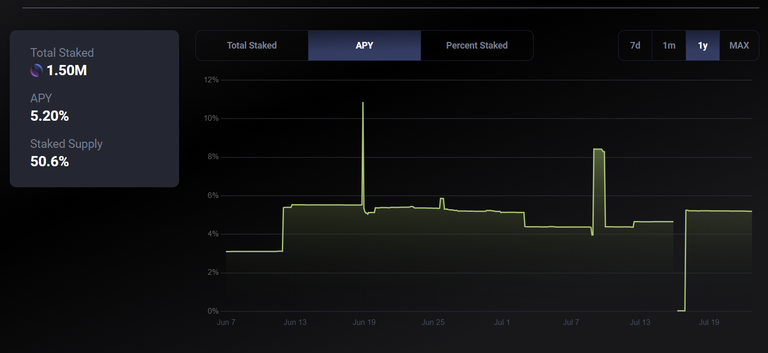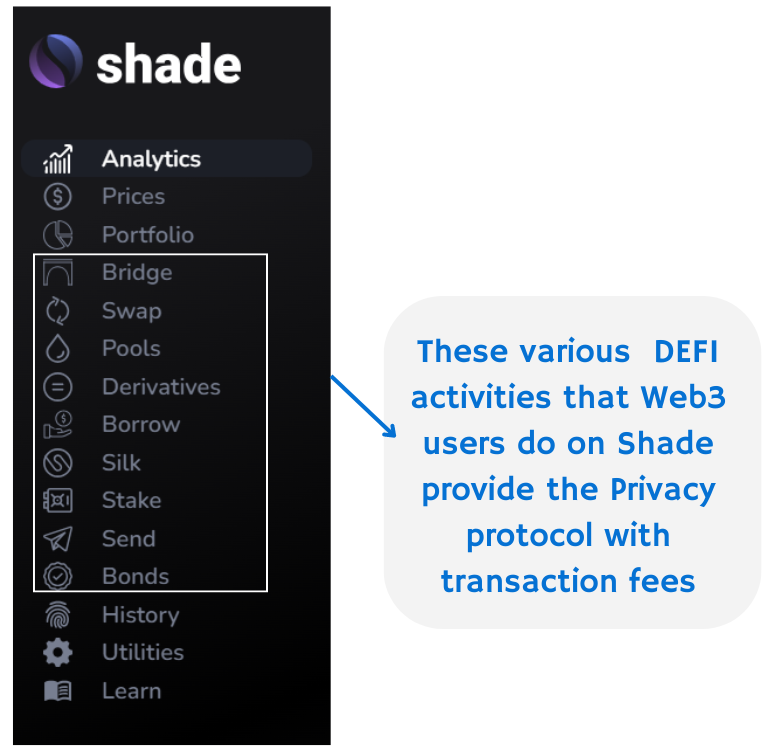
A mature stage of a Defi Protocol is when it's able to operate sustainably
The evolution of DEFI protocols are happening to make them more sustainable. By now, there are a number of well-established protocols that have large-scale adoption and usage that fees have started pouring, providing these protocols revenues to operate sustainably.
This signifies that these DEFI protocols have ripened, with successful large-scale usage of the protocol and a rewarding business model that is generating fees and revenues for the protocol.

Source. Top Dex with the deepest liquidity for Stablecoin swaps and LSD asset swaps; Curve Dex, generates fees and revenues to operate sustainably.
In the larger context, it also means that the DEFI space has matured, with wide engagement of Web3 users on the DEFI space.
Sustainable DEFI protocols can afford to stop rewarding its users through token inflation
This is pretty cool. Once a DEFI protocol has enough users onboarded into their platform and usage is good, the protocol can afford to halt rewarding Liquidity Providers ( LPs) with percentage distributions of their platform's native tokens in the form of APR Token distributions.
Defi Protocols need to progress to the point where they can afford to cease rewarding users through token inflation...
Token inflation reward incentives are not required for protocols that have grown mature generating revenues
Initially, as the protocol launches, users who onboard into the platform and provide liquidity are rewarded with the protocol’s native token. The tokens are distributed by providing the users with ARP rewards, where a percentage of tokens are distributed to users as incentives for providing liquidity.
This token that is distributed is at the beginning inflationary as it’s funded through inflation. As the protocol grows with more user adoption, LP rewards can be stopped slowly, as LPs get compensated through swap fees.
Over time as the DEFI protocol has matured procuring enough liquidity and trading volumes, users automatically earn lucratively through swap fees, so there is no need for additional incentives.
Although, new pools that get launched on the protocol can again be incentivized with Token ARP rewards of the protocol’s native token. All this is done to bootstrap enough liquidity.
A Pioneering DEFI protocol that has no need anymore to reward its users through token inflation
So, now there are established DEFI protocols that don’t provide Token ARP rewards as they did initially. Early adopters of these protocols have benefited best by acquiring the protocol's native tokens for supplying liquidity. Such is the case with users of Dexs like Uniswap for instance.

Source. Defi World's pioneering Dex Uniswap is a dex that generates substantial revenues through fees enabling it to operate sustainably.
Uniswap’s UNI token surely now classifies as a midcap token with a market cap of almost 6 billion $. I guess, it’s a large-cap crypto coin now that attracted the attention of the SEC and became a target for the Regulatory Enforcement Agency to launch its 'regulation through enforcement' action attacks. .
Here, SEC as usual threatened to take enforcement action on Uniswap levying charges of violating securities laws with SEC naming UNI as a security token.
Well as DEFI protocols gain adoption they generate revenues and operate sustainably with the inflation of their native platform token decreasing over time.
Shade Dex has transitioned into providing SHD stakers healthy real-yield ARP rewards!
Now, DEXs like Shade, are focusing on providing real yield ARP which is more juicy than Token ARP rewards because the later reward is diluted as it is procured through additional token emissions that cause inflation.
Shade is a privacy DEFI application on Secret Network, and it powers privacy DEFI. Here, the focus is on user having data privacy. A user’s lend and borrow position would be private, so would details of users’ holdings in the wallet. Users’ trading transaction details will be encrypted as well. Nice stuff!
The native token of Shade is SHD, the utility and governance token of the protocol. Shade’s transaction fees collected in SCRT will converted to SHD to be distributed as yield to SHD stakers, LP providers etc.
You can learn more indepthly about Shade from the Shade’s website -: https://shadeprotocol.io/
Real APR yield rewards are procured through actual fee revenue earnings of protocol, it's undiluted!
Here my focus is to delve deeper into this innovative style of providing users real yield ARP rewards and understanding how more juicy this is as compared to providing users inflation-based ARP rewards.
Shade has some usage, as the Private Financial DEFI application performs fully functional DEFI core operations of AMM Dexs and Money Markets (Borrow and Earn through lending).
Shade is earning fees from the protocol’s active usage through transaction fees. Every transaction on a DEFI protocol will have users pay a small transaction fee.
In Shade, users conduct many transactions from sending assets from Shade to another Cosmos chain (Osmosis for ex through IBC), staking SHD, wrapping other public assets into SNIP format tokens, ie,their privacy-preserving versions to use those SNIP tokens like sAtom, sOsmo, sJuno on Shade's private DEFI.
Users can swap their SCRT tokens (native token of Secret Network) and SHD tokens into liquid staked versions of these tokens – stkdSCRT and dSHD that accumulate staking rewards.
All these and various other transactions performed on Shade will provide the protocol transaction fees, right now collected in SCRT tokens.
Shade provides SHD stakers real yield APY in the sense, the protocol purchases SHD from the transaction fees it has collected and distributes this SHD to Shade stakers.
Shade has a mechanism to buy SHD from the transaction fees earned by the protocol, and distribute this SHD to SHD stakers. This is real yield APR rewards.
Healthy user incentives based on actual fee generation of the Protocol!
So, SHD stakers’ yield is real as it’s pegged to the operational revenues of the Shade Protocol. During dull DEFI activity periods when Shade protocol generates less fees, stakers earn less yield and during active DEFI periods when Shade generates more fees, users correspondingly earn more yield.
This is actual yield and real yield of Shade Protocol that’s distributed to SHD stakers.

Data from Shade Analytics.
SHD staking yield is variable as it varies according to the fee generated by the protocol.
This is a good system than distributing SHD to stakers through SHD emission which causes inflation and dilutes the value of Shade.
The actual value of Shade Protocol is represented in the SHD token!
Shade Protocol accumulates value through SHD token as every financial unit of Shade protocol DEFI – ShadeSwap, ShadeLend and other modules add value to SHD token.
Do explore Shade Protocol here -: https://shadeprotocol.io/
Thank you for reading my article. Don't go without upvoting this content if you find that it is good, quality content!
Posted Using InLeo Alpha




